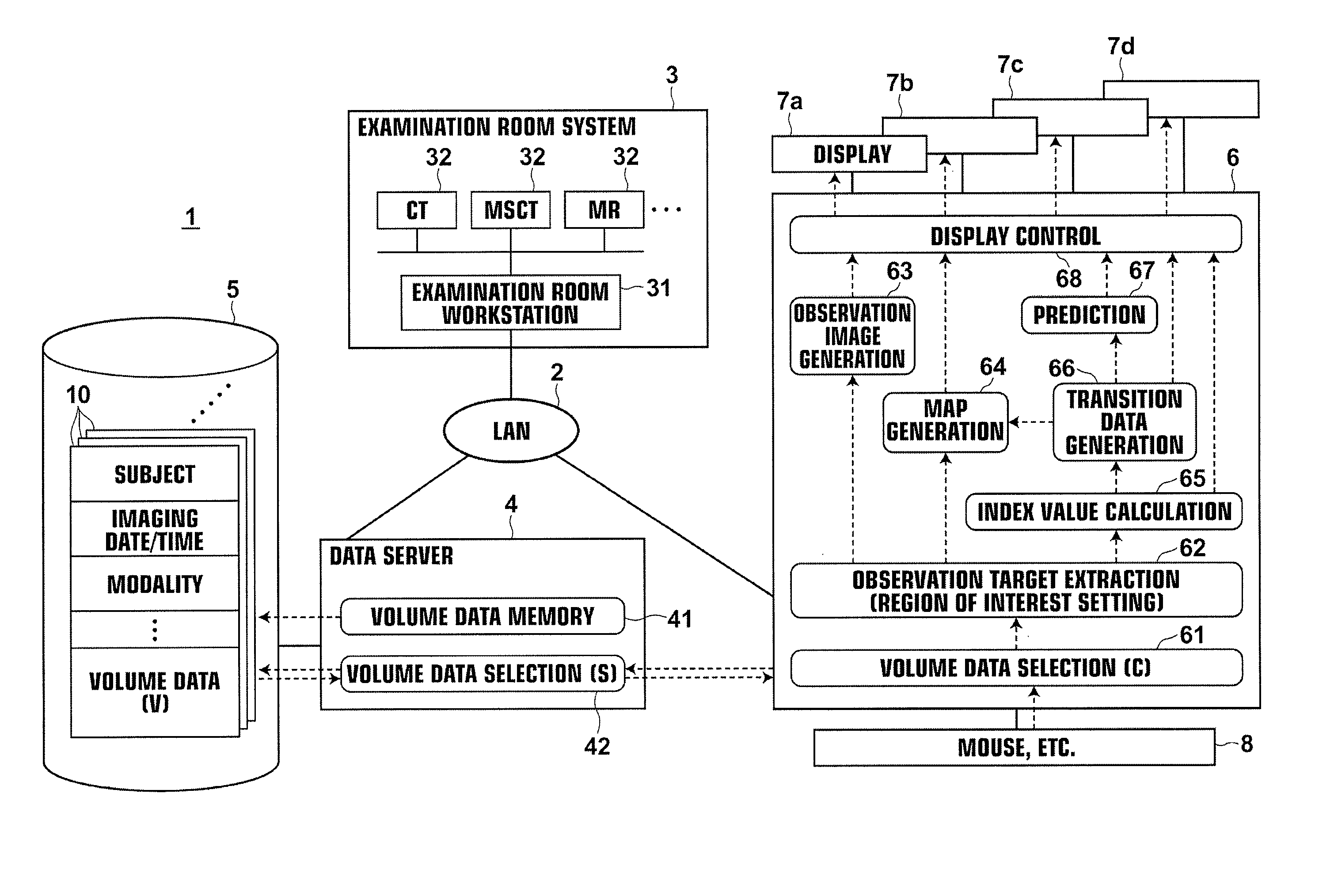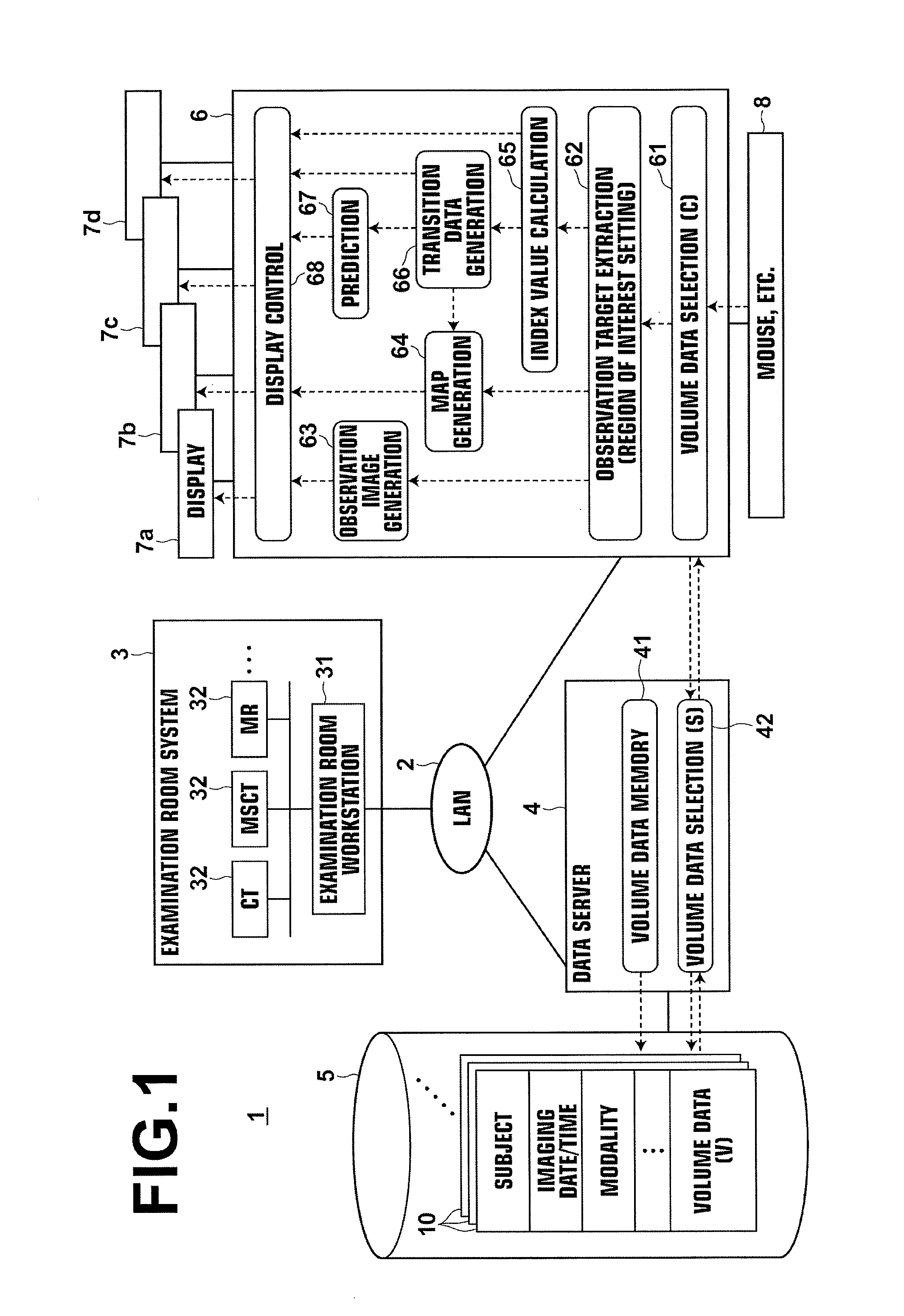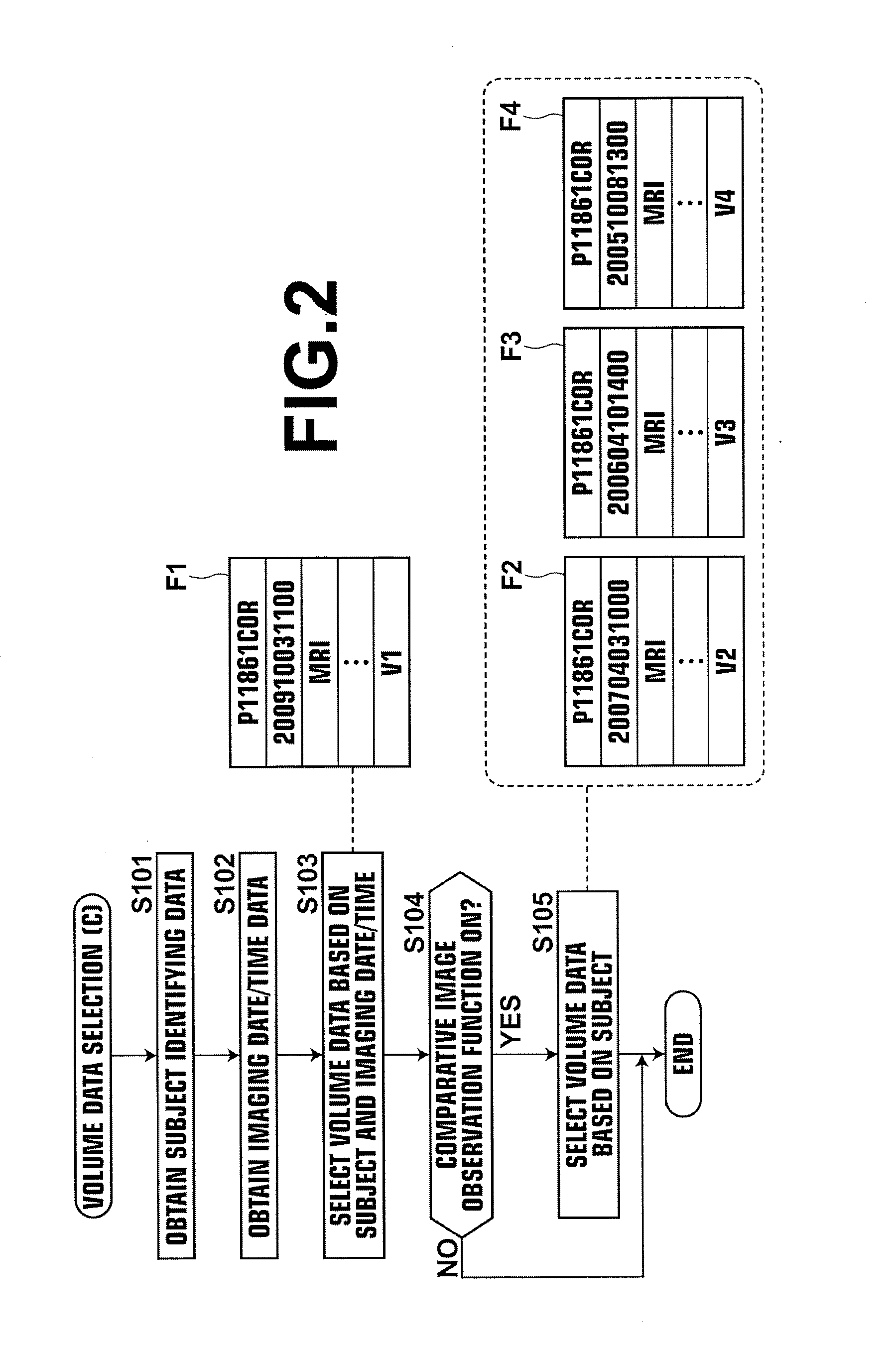Diagnosis assisting system, computer readable recording medium having diagnosis assisting program recorded thereon, and diagnosis assisting method
a technology of diagnosis assisting and computer readable recording medium, applied in the field of medical devices, can solve the problems of inability to understand and simplify the stepwise changes of subtracting images, and achieve the effects of improving processing efficiency, improving accuracy of prediction, and increasing the amount of data to be processed and displayed
- Summary
- Abstract
- Description
- Claims
- Application Information
AI Technical Summary
Benefits of technology
Problems solved by technology
Method used
Image
Examples
Embodiment Construction
[0035]FIG. 1 illustrates the schematic structure of a diagnosis assisting system according to an embodiment of the present invention. The diagnosis assisting system of the present embodiment is constituted by: an examination room system 3; a data server 4; and a diagnosis workstation (WS 6); which are connected to each other via a local area network 2 (LAN 2).
[0036]The examination room system 3 is constituted by: a modality group 32 for imaging subjects; and an examination room workstation 31 (WS 31) for confirming and adjusting images output from each modality.
[0037]In the case that the modality 32 is that which outputs two dimensional slice data (such as a CT (Computed Tomography) apparatus and an MR (Magnetic Resonance) apparatus), the examination room WS 31 reconstructs the groups of slice data to generate three dimensional volume data, and sends the generated volume data to the data server 4 along with appended data. In the case that the modality 32 is that which directly outpu...
PUM
 Login to View More
Login to View More Abstract
Description
Claims
Application Information
 Login to View More
Login to View More - R&D
- Intellectual Property
- Life Sciences
- Materials
- Tech Scout
- Unparalleled Data Quality
- Higher Quality Content
- 60% Fewer Hallucinations
Browse by: Latest US Patents, China's latest patents, Technical Efficacy Thesaurus, Application Domain, Technology Topic, Popular Technical Reports.
© 2025 PatSnap. All rights reserved.Legal|Privacy policy|Modern Slavery Act Transparency Statement|Sitemap|About US| Contact US: help@patsnap.com



